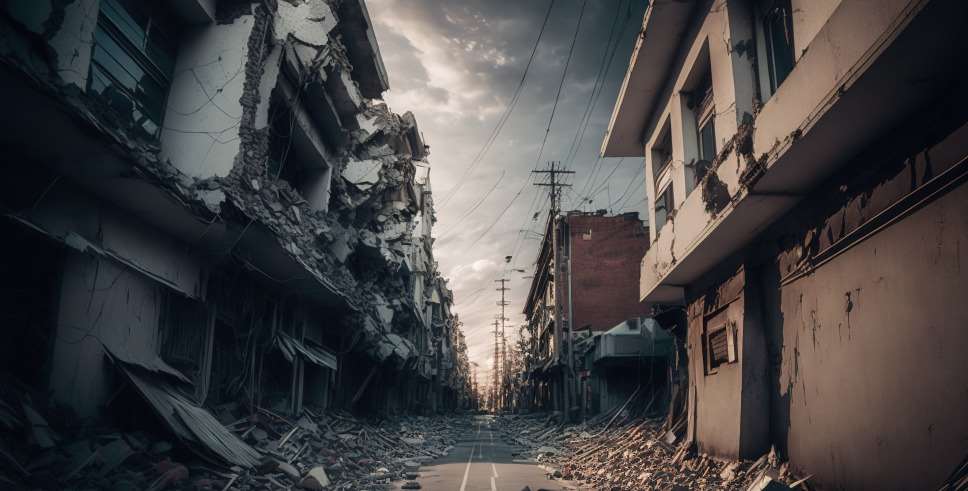Recent global seismic disturbances have prompted Governments and organizations to review their respective vulnerabilities to medium to high intensity earthquakes. A descriptive diagram of the major seismic zones in the world are illustrated in the figure below.
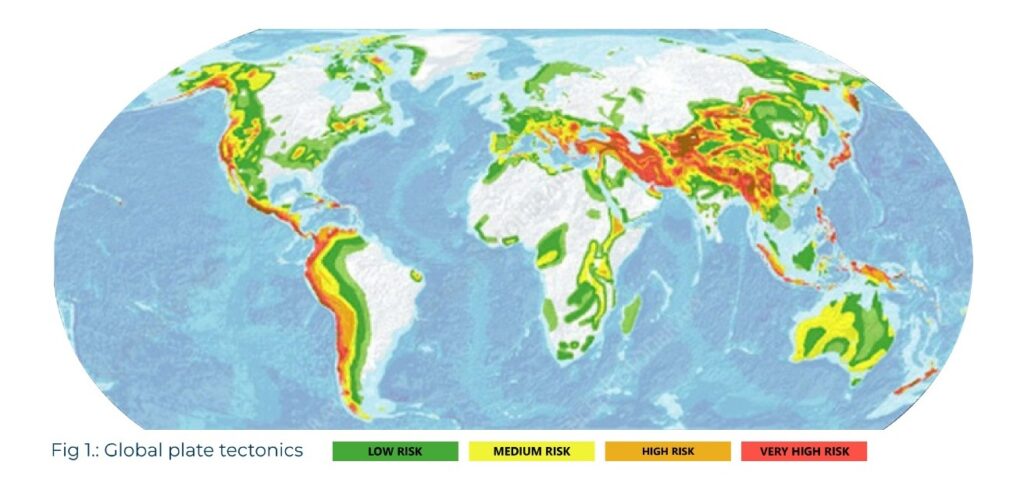
The current geological era has been scientifically termed as a stable era in the history of the world. However, recent tectonic movements from the Pacific Rim, Himalayan plate, Eurasian plate and Americas have resulted in several low to medium tectonic activity over the past five to six years. Over the past 100 years the proximity of periodic medium to high intensity earthquakes have
increased significantly. The timeline of major earthquakes over the last 10 years gives an indication of the increasing trend towards geological destabilization.
In Feb 2023 – the earthquake (7.8) in Turkey and Syria created large scale damages and deaths. This earthquake was preceded by a 7.9 level earthquake off Indonesia and several others in various locations in near the Himalayan, Eurasian, South American and Pacific belt.
The current Global Seismic Activity Level is regarded as High as per data collated from various sources.
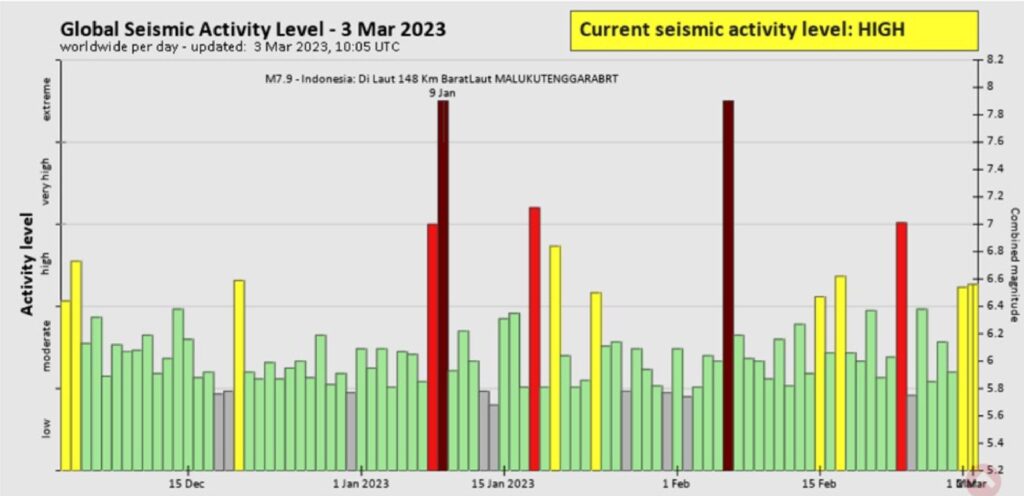
Fig 2: Global Seismic Activity levels from Dec 22 to March 2023 (Data Source: Dr. Tom Pfeiffer – VolcanoDiscovery)

Global warming and the reduction of load bearing glaciers – melting permafrost also contributes (although not a major contributor) to the crustal movements and localized seismic activities. Earthquakes due to sediment loading and movement also plays an important role in areas such as South Gujarat, Mumbai, Northern Plains of India etc.
Earthquakes originate from a particular depth below the surface of the earth, and they are categorized as shallow focus, intermediate focus and deep focus. P and N waves caused due to these crustal movements are responsible for the detection of seismic waves. Shallow focus earthquakes are the major cause of longitudinal movement of the ground surface and is the reason behind structural damage, fissures and cracks.
The document highlights key steps organizations may take to re-evaluate their crisis response and business continuity plans to ensure an acceptable degree of readiness should there be a local impact to their facilities, people, clients and processes. The number of earthquakes are expected to rise globally, and the degree of readiness required to ensure damages are restricted and facilitate better recovery is the need of the hour for Governments and Enterprises.
Vulnerability Assessment:
A vulnerability assessment is to be carried out for the below domains which may be impacted during an earthquake.
- Location Assessment: A brief location assessment may be done to determine the below:
- Government body rating of the city, district and state (Zone 1, Zone 2, Zone 3).
- Inclusion of earthquake response plans in the civic / district disaster management plans.
- Proximity to water bodies such as lakes, dams and rivers. In case of coastal area proximity to creeks, sea shore and availability of Tsunami warning systems in the region.

- Facility Risk Assessment: Facility risk assessments are important to be carried out for all types of construction grade buildings. Key aspects which require to be highlighted as part of the Hazard Risk Assessment are as below:
- Material resistivity to earthquakes – as per compliance all new structures are required to be earthquake resistant upto a certain grade.
- Structural integrity of glass facades – distance of workspace (desks and seats) from a glass façade – for high-risk zones it is recommended to have an offset distance of over 5 feet (depending on surface area of the glass façade).
- Identification of critical load bearing points – awareness to visually check these points – to be marked on layouts. (Note: Layouts to be stored in grab bags)
- Elevator response – auto stop in case of higher than designed vibrations.
- Emergency staircases – clear of obstructions – secure emergency lighting
- Isolation of UPS, battery and electrical rooms to avoid fires during an earthquake.
- DG cut off – securing HSD storage.
- Within the workspace identify fixtures such as ceiling lights, wall art etc. which are directly overhead a desk or seating area.
- Basement safety – emergency lighting, pillar identification, stack parking safety controls. such as locked local switches, check if ramps are close to structural pillars.
- False ceilings to be secure – all loose fixtures to be identified and tightened.
- Water pipe / gas piping integrity – identify potential loose pipes under pressure.
- Storage rooms – secured storage at height, grounding of racks and other fixtures.
- Financial Vulnerability Assessment:
- Commercial insurance covering earthquake damages
- Contracts and lease agreement clauses having financial implications towards Force Majeure clauses.
- Ensure all building compliances are in place to ensure no administrative pushbacks on relief pay-outs by insurance companies or Government rehabilitation schemes.
- Damages to private property including vehicles.
- Travel insurance plans to cover accidental health insurance.
- People / Demography Assessment:
- Concentration of people living in high-risk seismic zones.
- Overlay of earthquake risk zones in travel risk management plans.
- Partner hospitals to be identified in high-risk zones.
- Provision of emergency medicines through existing service providers.
- Coordinate the required movements.
If the outcome of a facility risk assessment for a rented space in an active seismic zone indicates a ‘marginally safe’ or ‘unsafe’ level; organisations may even consider changing their site in consonance with business decisions..
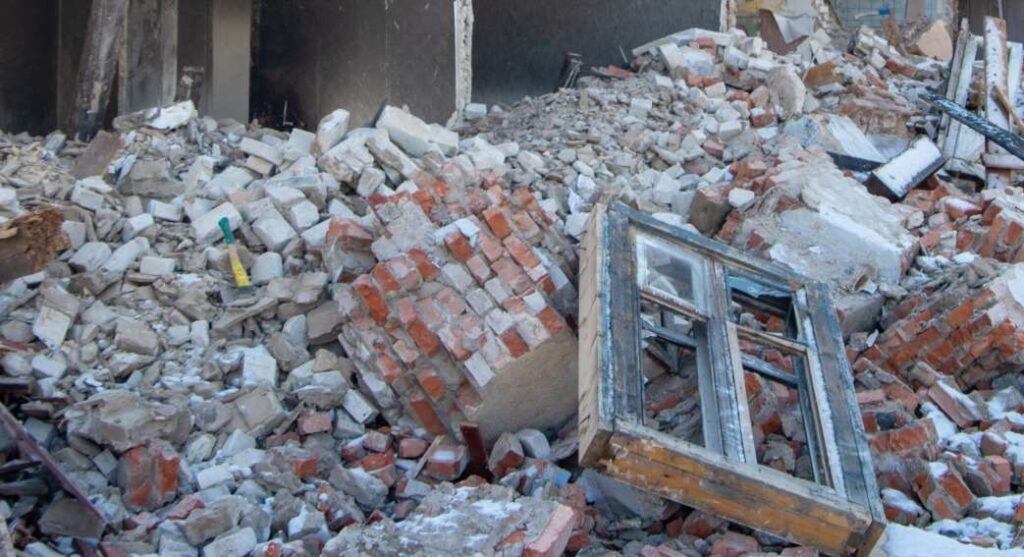
Emergency Response and Drills:
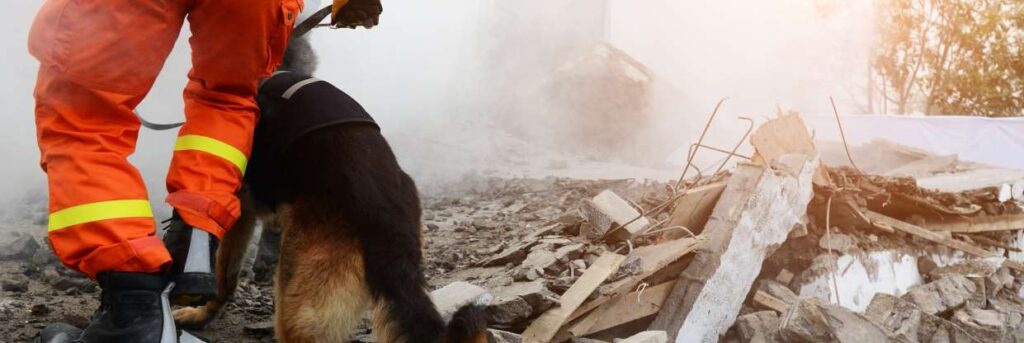
- Drills and Trainings:
- Conduct earthquake drills at the workspace for all staff and employees.
- In case of multitenant facilities – evaluate building management / landlord earthquake response plans.
- Carry out earthquake emergency response and incident management drills for ERT teams and Crisis management teams.
- Awareness sessions on how to react to earthquakes while at home or outside the workspace.
- Emergency Response:
- Identifications of safe zones / assembly areas. Assembly areas to be sufficiently offset from any standing structure – over 10m.
- Grab bags to be kept ready on all floors and areas of the workspace. Grab bags to contain first aid kits, rope, flashlight and batteries, safety vest and helmet, soft copy of all updated layouts, electrical diagrams, HVAC duct layouts and diagrams, list of ERT members and contact numbers, list of building management support numbers, basic tools and cutters, smoke mask and safety glasses.
- In case ambulance is available – ambulance is to be made available outside of the basement (on ground / surface level).
- No obstructions on the fire driveways.
- Build support community groups of other peer organizations outside of the primary location within a radius of 5km.
- Ensure building management has in place elevator rescue procedure.
- Ensure extracts of the local government earthquake disaster management SOP’s and important contact details are added in the site emergency response plans.
Organisations must also liaise with their national or state level disaster response organisations and carry out earthquake drills jointly with them.

Key Recovery Actions:
Business Continuity plans should clearly list procedures to “organize” recovery following an earthquake. The plan should address business interruption risks and loss of essential utilities and services. The below points should be factored to be added in the BCP plan:
- Plans for inventory of damage.
- Gradual and safe restoration of essential services e.g., water, power, gas (if applicable), sewage treatment, waste disposal etc.
- Assessment and repair of fire protection systems.
- Contract procedures for suppliers (to find out availability of supplies and services after a major event).
- Communication procedures with internal stakeholders and customers to inform them of business-critical delays and capacity reduction.
- Easy access to up-to-date contracts to facilitate ease of procurement and repairs.
- Temporary shelter via partner hotels, emergency transport to shelters outside of town.
- Access to emergency cash flow and emergency budgets.
- Physical Security of critical sites and assets if applicable.

